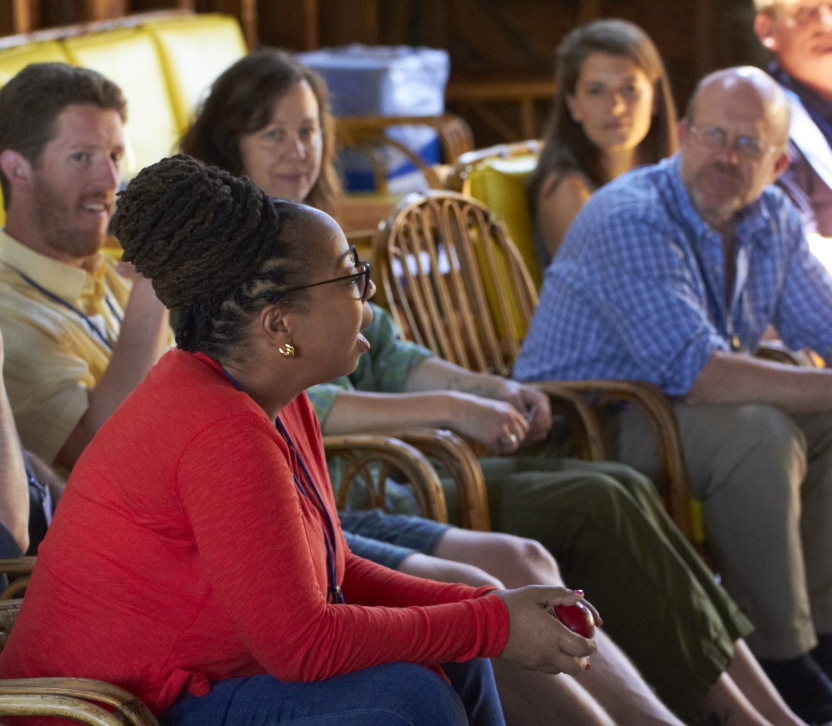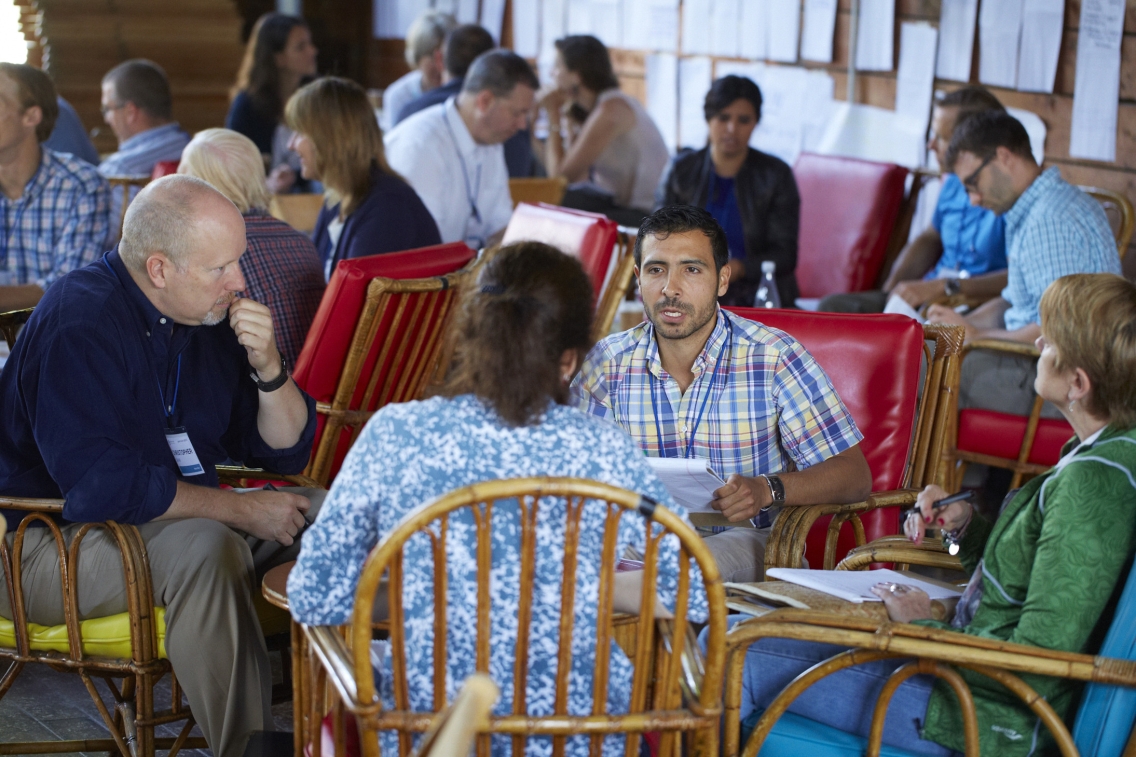Annual Social Entrepreneurship Forum Tackles Design Thinking in Higher Ed.

MIDDLEBURY, Vt. – The 2015 Faculty and Staff June Forum sponsored by Middlebury’s Center for Social Entrepreneurship attracted more than 120 attendees from more than 40 colleges and secondary schools, with some coming from as far away as England and Mexico. The annual forum invites educators from across the country to take a step back from their work life for a few days, enjoy the magnificent Middlebury Bread Loaf campus, and contemplate ideas related to social entrepreneurship.
“Higher education is changing in great ways, and this group is showing us how,” said Jon Isham, professor of economics and director of the Center for Social Entrepreneurship. “We’ve got traditional institutions, like Pomona and Middlebury, plus we’ve got up-and-coming innovators like Watson University and the Amani Institute. The intersection of all of this is folks who are trying to create the best possible experiences for students in this complicated century.”

This year, participants focused on design thinking, which is sometimes referred to as “human centered design,” a creative process for generating ideas. The process was made popular by the Institute of Design at Stanford University, among others. It can be a useful tool for teaching, says Isham. “We’re thinking about how to use design thinking to make higher education better, and to help students think about a life of meaning and social change.”
One design-thinking exercise that forum participants tackled was a 20-minute “Round Robin,” in which every participant was asked to address the challenge: “How can our institutions better support students from historically underrepresented backgrounds (including first-generation college students) throughout their college years?” In groups of four or five, participants offered solutions, critiqued those solutions, and then discussed how to overcome the critiques. A leading idea that emerged at the end of this rapid-fire exercise was identifying committed mentors for every student in this important and growing demographic.
Isham says that many attendees puzzle over how to bring design thinking into the curriculum at their home institutions. They’re looking for strategies to integrate it, where appropriate, into traditional classes and to persuade faculty members that it’s an approach that can enhance their teaching. “After two and a half days here, they should be heading back to their campuses saying ‘I really am much more focused and much more sure about what next steps I’m going to take,’” said Isham.
This year the forum at Bread Loaf partnered with Ashoka U’s Change Leader Retreat, an annual gathering for a select group of what are known as “Changemaker Campuses,” which are recognized as leaders in social innovation education. The two events overlapped so members of each group could spend time together in addition to their separate programs.
Increasingly the annual forum is attracting educators from secondary schools. Christopher Shaw, dean of academics at St. Georges School in Rhode Island, says his school is in the midst of launching design thinking programs in a variety of ways, for both students and faculty. Shaw says the approach has allowed faculty members to do quality committee work in a fraction of the time it previously took.
The benefit for students is also clear, says Shaw. “Our kids need this because they need to take some ownership of their own education,” he said. “They need to learn how to look beyond the AP, the honors-level course, and do something that is of great importance to them personally and into which they can invest time and their heart. That’s how they’re going to get into selective colleges like Middlebury – not through their ninth AP class.”

